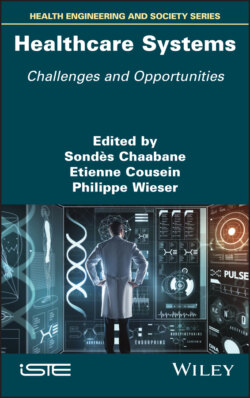Читать книгу Healthcare Systems - Группа авторов - Страница 26
1.6. Tests and results
ОглавлениеWe conduct our tests across several geographic areas in which Adomni-Quemera operates. We start from the initial weekly schedules established in August 2019 and update this schedule to match the October 2019 beneficiary and stakeholder population, which had changed since August. The results are given in Table 1.1. Each instance is characterized by its number of current beneficiaries, its number of current careworkers and the number of services required for the week. In the “Beneficiary variation” column (resp. “Careworker variation”), we specify the number of changes in the beneficiaries (resp. careworkers) compared to when the initial planning was established. Thus, “+1/-2” means that one person has integrated the organization and that two people have left. Next, we indicate the sum of the waiting times and travel times for all careworkers over the whole week. Finally, we indicate the execution time of the algorithm.
The tests were carried out on a machine with the following characteristics: Intel RCoreTMi5-7440HQ CPU 2.80GHz with 16GB of RAM. The optimization algorithm was developed in Java, and we used CPLEX to solve the PLNE. On each of the instances processed, we have variation in beneficiaries and/or careworkers, for which it should be noted that the overall hourly volume of work and the overall hourly volume of services requested remains similar to those provided in the initial schedule.
Due to the method being exact, we found the optimal solution for each of the proposed instances, that is, the solution that minimizes the overall waiting time of the careworkers. Execution times are very fast (at worst, in the order of a minute on the instances tested). Note that minimizing waiting times produces solutions with very low travel times, except for two instances (4 and 7). Since Instance 7 is the largest in terms of the number of careworkers, the average travel times per careworker are in fact no longer than for the other instances. We can compare the results with Instance 6, which has more careworkers but almost half as many services. The routes are far less busy, involving less travel and therefore less travel time. For Instance 4, because the associated sector is geographically larger, the longer travel times are not surprising. However, as we have no constraints or objectives of minimizing travel times, it is not excluded that there is a solution with equivalent waiting times but shorter travel times.
We can notice that Instances 5 and 6 have a similar number of services. As the variations of careworkers are much greater in Instance 6, the continuity constraints are harder to respect and the graphs constructed through our method are denser. This explains the difference in execution times.
Note also that waiting times greater than 90 minutes are not counted. Therefore, it is possible that the routes produced are fragmented, which implies a long amplitude. While a long break in the day is not disruptive, it is not desirable, and as such having a compact route is also a criterion of staff satisfaction.
Table 1.1. Numerical results
| Instance | Number of beneficiaries | Number of careworkers | Number of services | Beneficiary variations | Careworkers variations | Waiting time (h) | Travel time (h) | Execution time (s) |
| 1 | 3 | 4 | 56 | – | +1/-1 | 4. 2 | 3. 8 | 2. 2 |
| 2 | 11 | 5 | 85 | +0/-1 | +2/-3 | 4. 69 | 6. 49 | 2. 1 |
| 3 | 18 | 6 | 95 | +2/-4 | – | 8. 41 | 5. 7 | 7. 6 |
| 4 | 26 | 8 | 156 | +2/-7 | +2/-3 | 1. 5 | 19.3 | 40.6 |
| 5 | 26 | 11 | 179 | +6/-5 | +2/-2 | 7. 15 | 6. 4 | 30.13 |
| 6 | 40 | 18 | 191 | +8/-11 | +8/-6 | 5. 83 | 1. 83 | 65.8 |
| 7 | 92 | 15 | 337 | +7/-10 | +3/-5 | 12. 0 | 21.3 | 101 |
